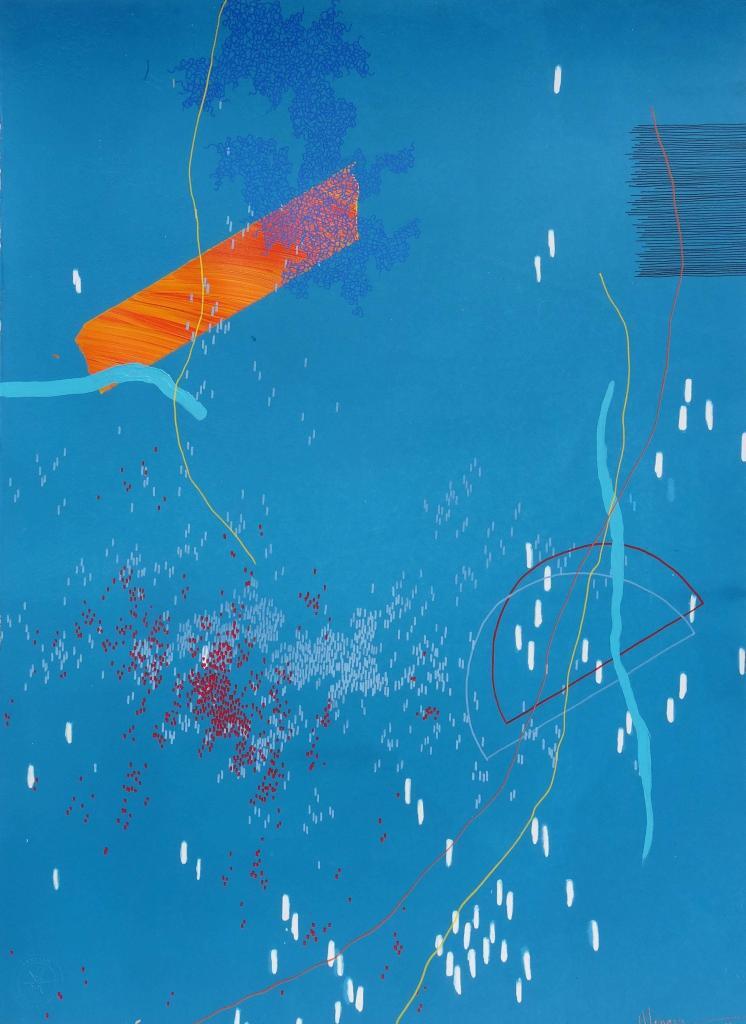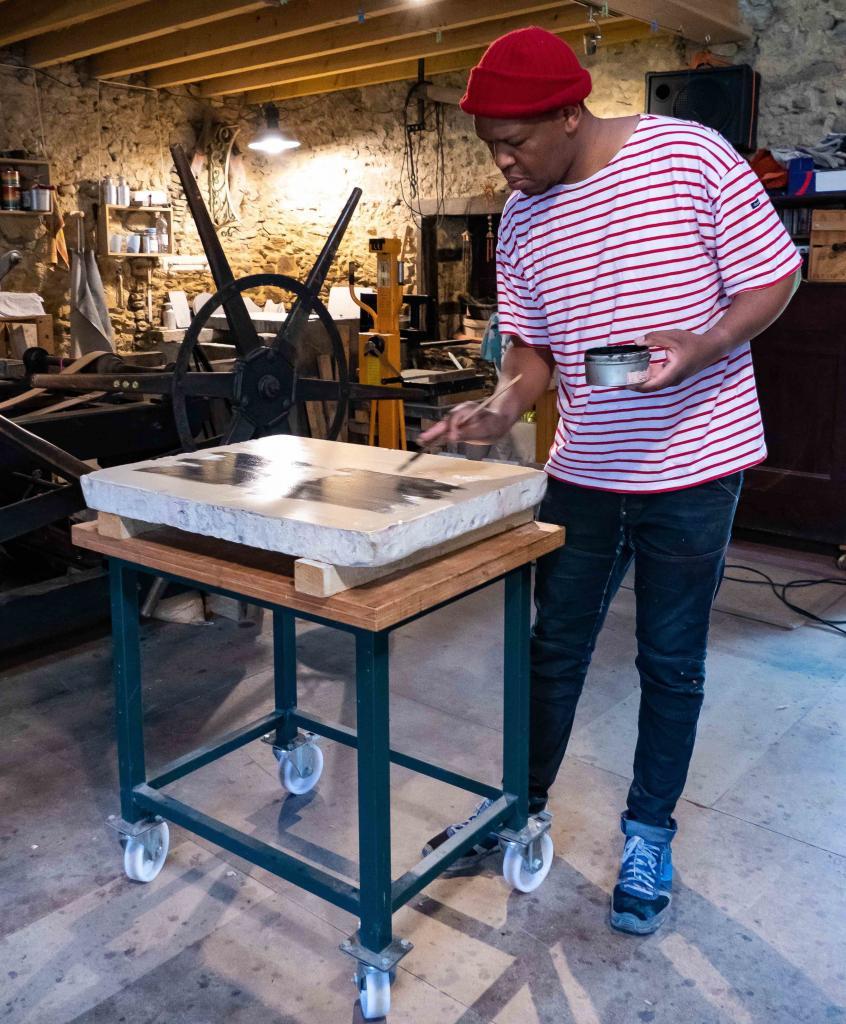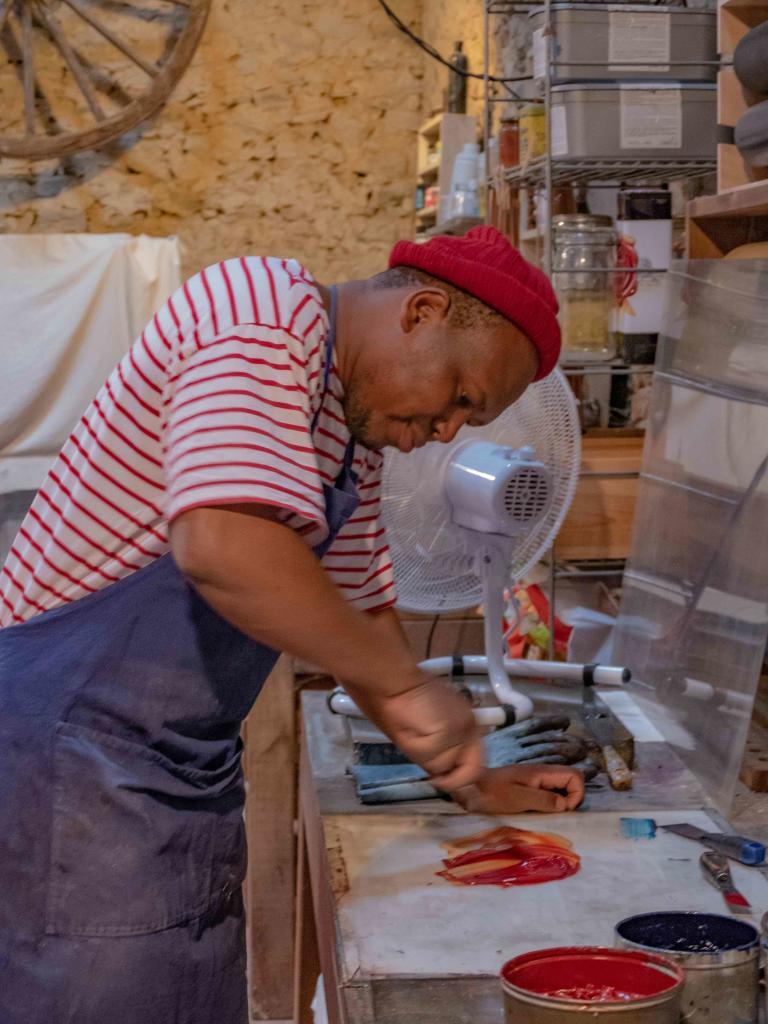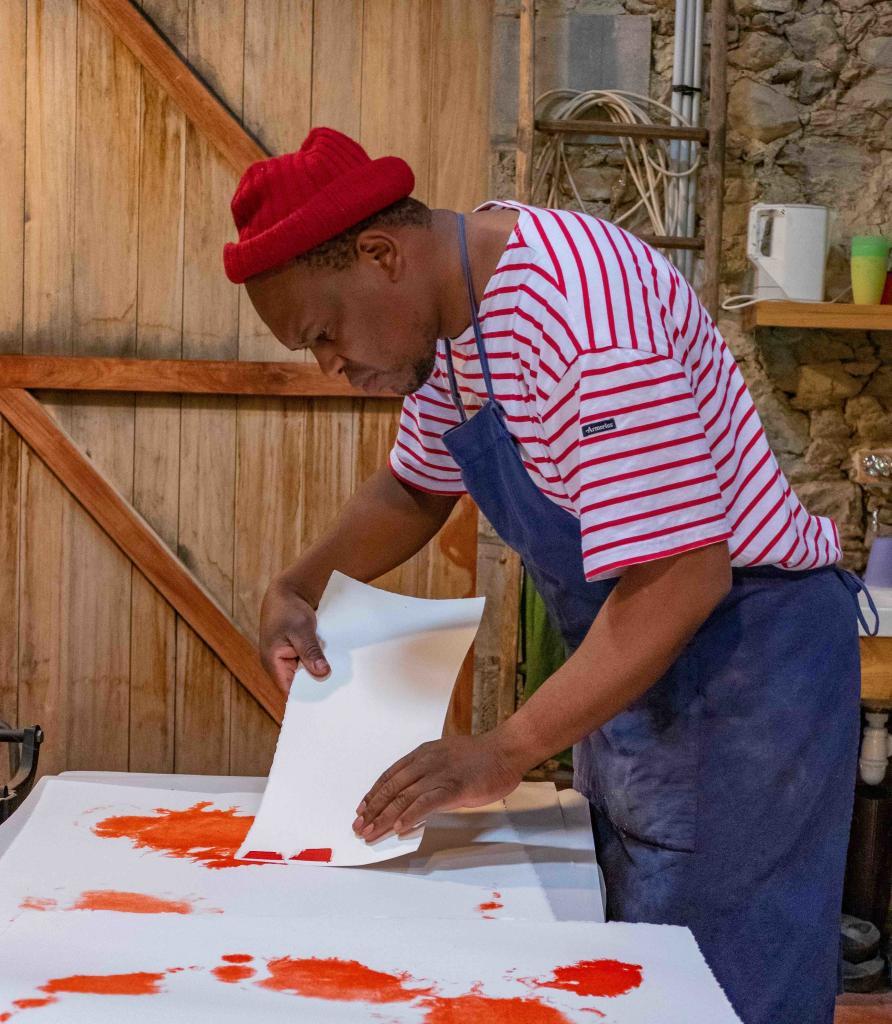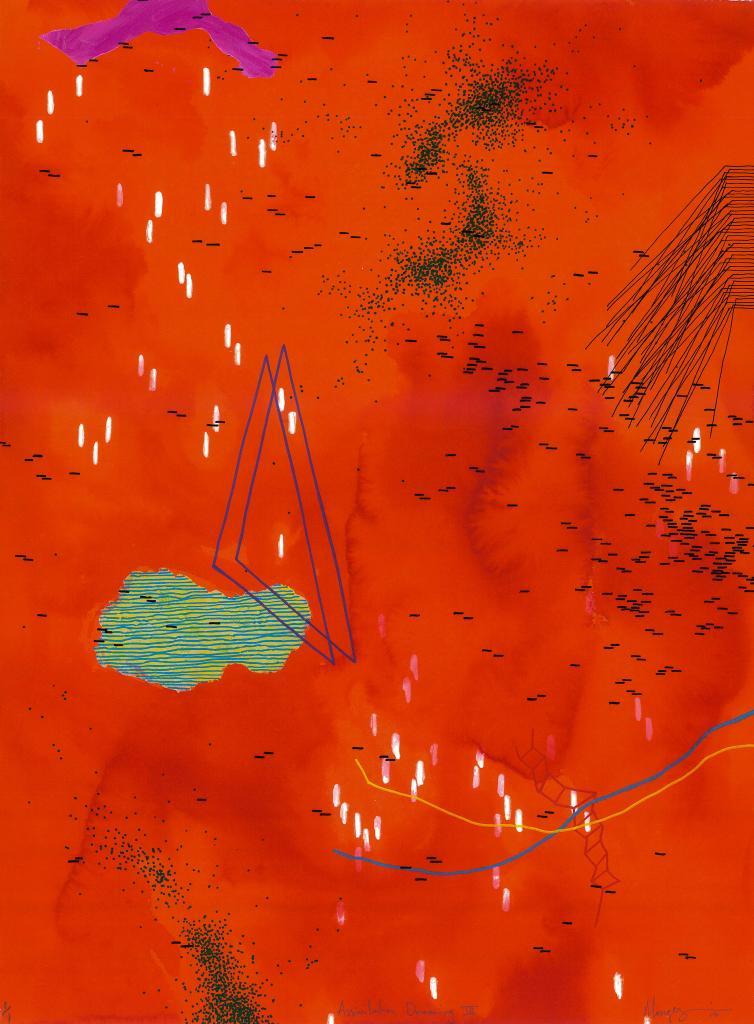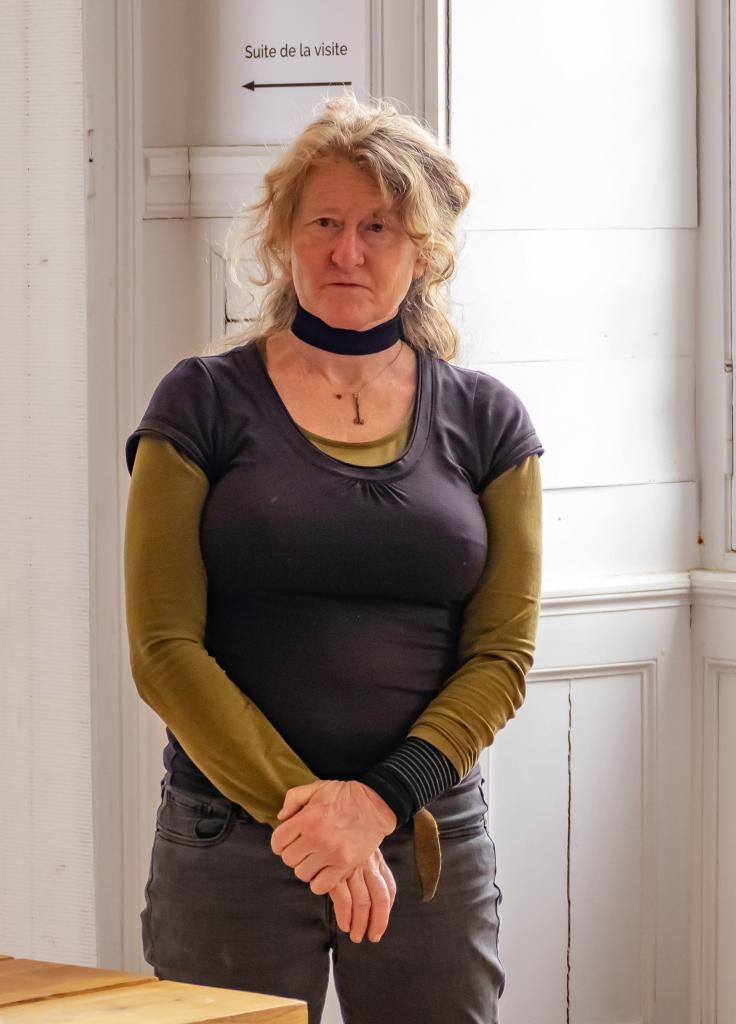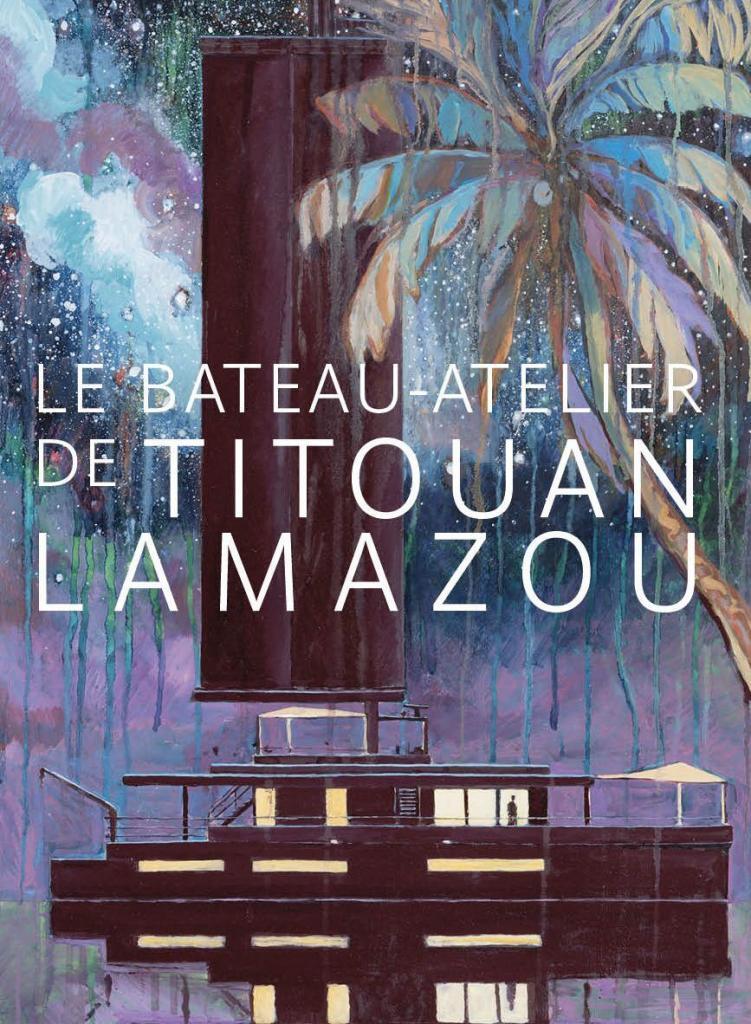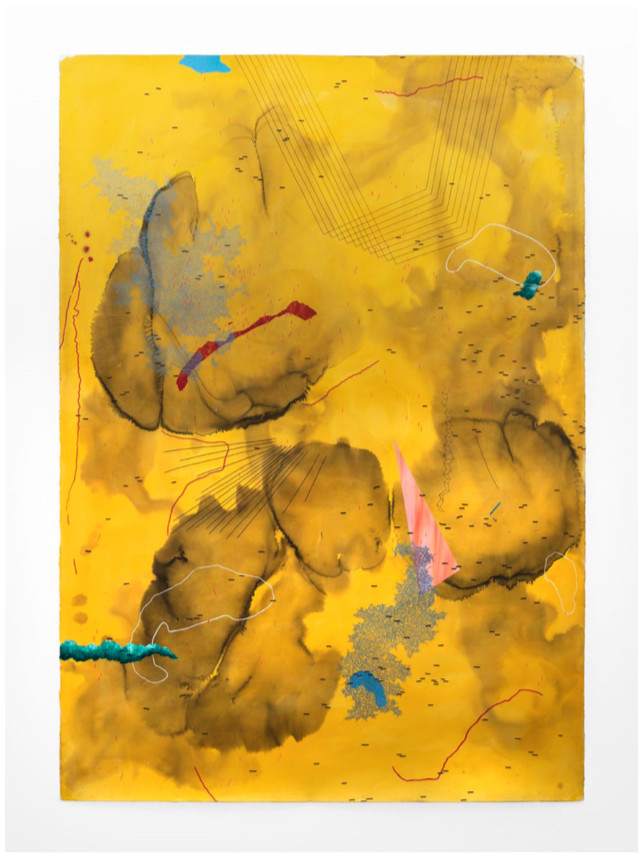Mongezi Ncaphayi in preparation with Atelier le Grand Village for 1-54 London
Mongezi Ncaphayi was recently at Atelier le Grand Village for a summer residency (29/07/2019 – 25/08/2019). Atelier le Grand Village is located in the Charente-Limousine. It is a studio dedicated to the art of reviving stone lithography, run by Francis van der Riet. The studio has been invited to participate at the London 1:54 contemporary art fair in October. Nadège Besnard went to discover the preparations the studio is making with artist and printmaker Mongezi Ncaphayi for this event.
“Open yourself up to your inner self, this is the unknown of your inner being”.
Mongezi Ncaphayi
Nadège: Mongezi, you have come regularly to Atelier Le Grand Village these last five years. How do you feel when you come to the studio here?
Mongezi: It is peaceful, it is just nice, quiet, like a retreat. I come here to clear my mind, to work on lithography and other different mediums. I come here for a new start to explore new ideas, see how things develop. It’s a great place to work.
Nadège: What about the studio?
Mongezi: I like the feel of the studio. It is unlike any other studio where I have worked. Here it is the countryside. There is the barn which has evolved into a studio, combined with the flowers, the garden, and some old rustic stuff. I’m not used to such things, I’m a town boy, a city boy. I am used to things in the city. It is a relief to be here away from the city. The air is different here. Francis now has installed the old press; it seems part of the environment. Why I like coming here is because we focus on stone lithography, which is more traditional. This is one the main reasons I like coming here, I like the stone. We go back in time to make stuff the traditional way.
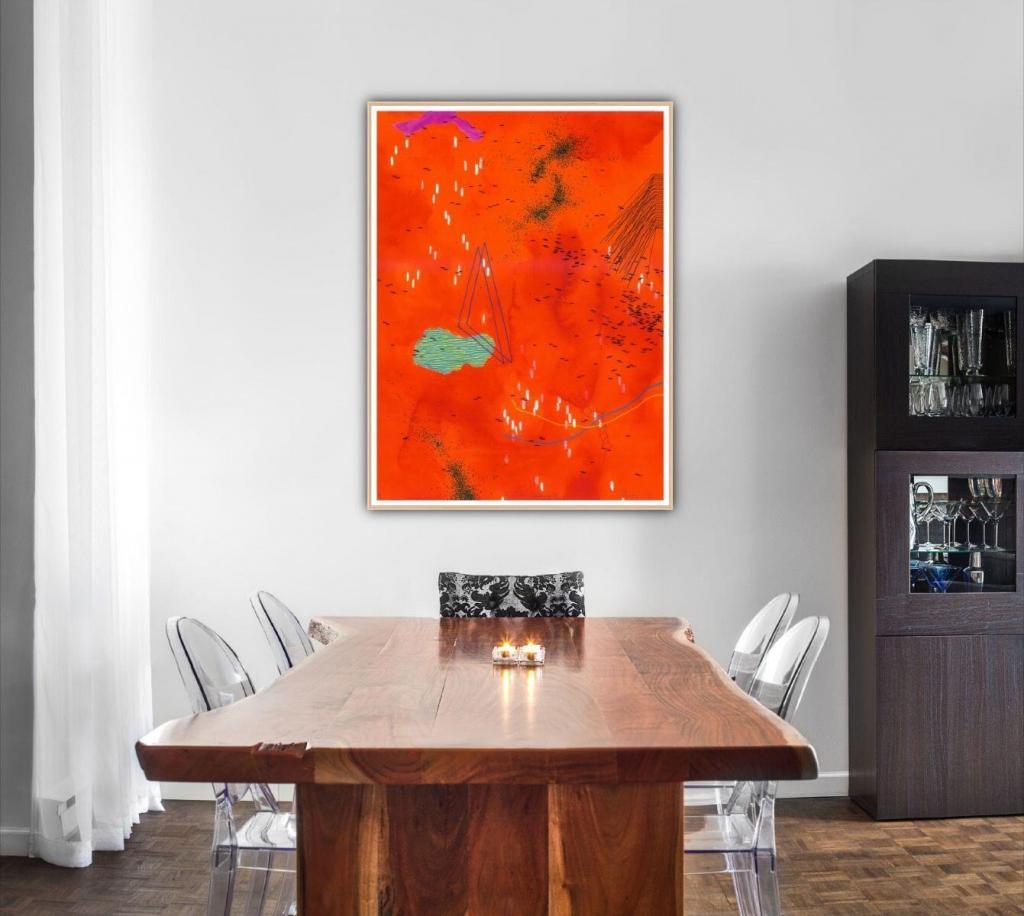
Nadège: Tell me what are your main influences in your work now?
Mongezi: I studied abstract, I used to paint and to make representational works, but I grew up with a lot of musicians listening to jazz. I would be in my studio listening to music, most of the time, loud. At some point I was working and suddenly my mind shifted. Instead of just working listening to music, I did something with regard to what the music was doing to me right then. I wanted to translate this and that’s why I started creating abstracts. I always wanted to do music and painting, I wanted to incorporate both into my work. Music is also about feelings and I want to express this.
“The mining, the history, the displacement and the migration, these are all issues translated into abstraction.”
Mongezi Ncaphayi
Mongezi: Where I grew up also influences me. I grew up in a small town that used to be a small mining town in Benoni, east of Johannesburg. My personal history, my family history, the history of the town, the South African history, these are main influences which have got me to where I am now. Even though my work has changed from the representational, it still has the same content that I started with. The mining, the history, the displacement and the migration, these are all issues translated into abstraction. These are issues I still think about and it is something I am still exploring.
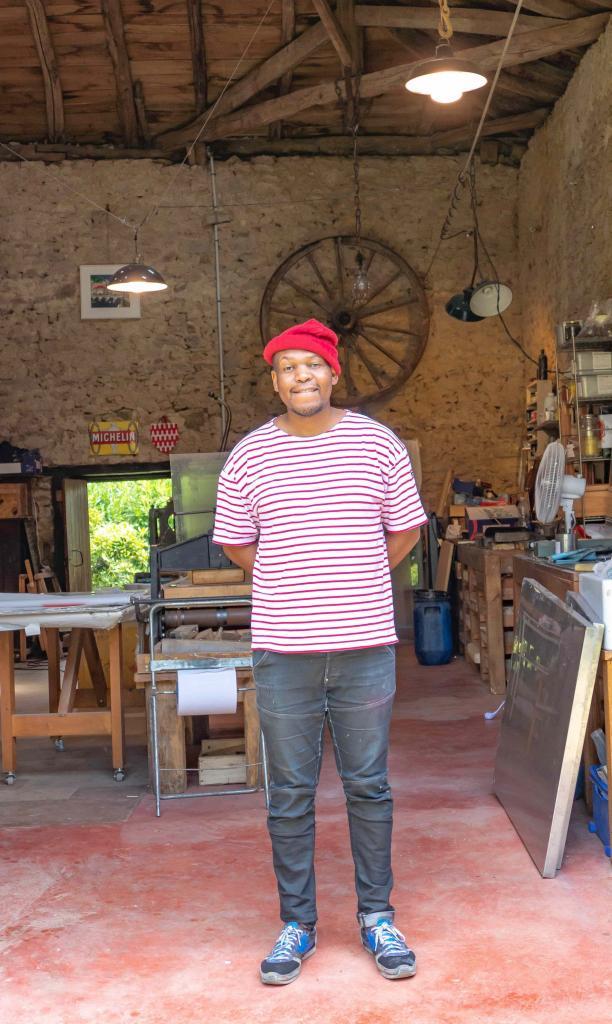
Nadège: What about the places where you work?
Mongezi: I like to work in different places, different places produce different works. Here at Atelier le Grand Village it is quiet. The environment dictates what kind of work comes out. In Jo’burg, it is busy. Currently I am working from Cape Town but I never work only from one place. All my works from the past five or seven years come from different places: Jo’burg, Cape Town, Atelier le Grand Village in France, the Netherlands and the United States. My family also live in several places. I can go to see my grandmum and then decide to go and see my cousins or my friends. That’s why my works deals with the movement, the mapping.
Nadège: Can you explain the titles of your art works?
Mongezi: There is something poetic about them. There is so much meaning in my titles. How do they come up? Sometimes it comes up with the objects I am working with, something I have seen. Sometimes a sound in the surroundings. It’s about how I feel about the work and other things that happen. My work can be about my history, but it is also about ideas that I have, that happen. There are so many things happening in my mind while working. Because I don’t work on one piece each day, the next day I can feel differently. My mind is occupied with lots of thoughts.
There is this title ‘Roundabout idiot’ – I was travelling with Francis in Angouleme and there were many roundabouts. When we came back to the studio, I was working on a stone lithograph which required so many layers in order to appear complete. I felt like I was going round and round, like an idiot. Just a simple thing and that’s how that title came about.
There is ‘La forme des choses à venir’ from a stone lithograph created in 2015. This means ‘The shape of things to come’ and is adapted from one of my favourite jazz composers, Ornett Coleman. This is my first stone lithograph ever made in France, when I started working with Francis. It was like a new start of things.
“(…) you don’t dance for people, you dance for the inner self.”
Mongezi Ncaphayi
Nadège: Do you think about a body of work before coming to Atelier le Grand Village, or do you let your instinct guide what you create?
Mongezi: I realise that if I work instinctively, the work has more feeling. If I think too much before, it become a bit stiff. It could be nice but you don’t really feel the movement, the flow, it is more spontaneous. It is also having to do with TRUST, trust your instinct, be yourself. I felt I should sketch, but finally thought it’s not right for me. If I instinctively do everything, I feel something. I don’t know what it is. I give a few minutes and then it just goes POP. It’s about how I feel in the moment when I am working, how I feel right now. I think I have more a recipe for working, but I don’t think I have a formula because then my work would all be the same. I always try to discover new things when I’m working.
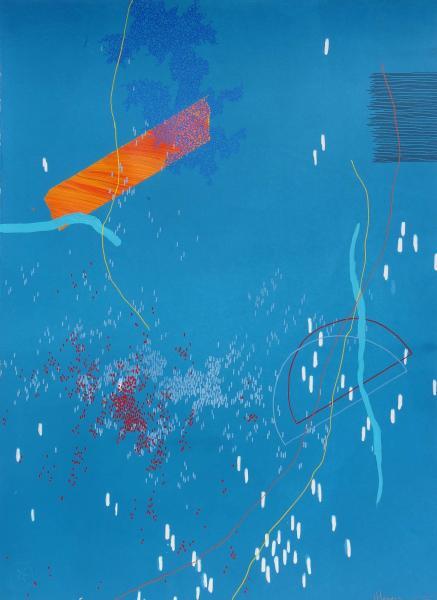
It’s not only about painting or making something that I know, it’s also about discovering new things like a shape, or a mark. Its more about searching. My works are like maps, searching where you are going, allowing yourself to receive things, allowing yourself to be exposed to something new. Instinct is important. You have a map, you are going to a place you don’t know, maybe you have to jump or to swim, and you are scared but you do it. The map was right, and you look at what you discover. Open yourself up to your inner self, this is the unknown of your inner being, the other aspect of yourself that you don’t know. To see the unknown, you need to open up, and evolve so that we can be better people – the self-discovery, and it goes forward.
These feelings you cannot ignore and this reflects in the work. Tomorrow I might feel differently and then I reflect on my mood yesterday. So, the next day, the map will be different. Feeling is important. You just let yourself free, you don’t dance for people, you dance for the inner self.
Nadège: You won recently this prize at the INVESTEC Cape Town Art Fair, then you have 1:54 in London with Atelier le Grand Village, Lagos Art Fair, plus other residencies and shows planned after that. How do you feel about all this and these expectations?
Mongezi: It is overwhelming. It is like a pressure but I don’t like to feel it is like that. I just want to feel, have time to just ‘flan’. I know the dates and I like the pressure but I don’t like to panic. Yes, it is so many things, but all great things. I’m glad and happy. I have worked hard, and I’m recognized. I just have to do it, I chose to work hard, I strive to excel, so if you want to be on top you must know it’s hard. You must face the music. I appreciate everyone that I’ve worked with and that have supported me. Also giving me the platform to showcase my work. I keep doing better that I was doing some years ago.
“To see the unknown, you need to open up, and evolve so that we can be better people.”
Mongezi Ncaphayi.
Nadège: When did you start to work on printmaking?
Mongezi: It’s more than ten years. Making prints is part of me, I cannot live without it. I always have the need to make prints. For me printmaking is not about taking my paintings and translating them into prints. If I paint something, if I do a print, it is what it is. They are separate. If you talk about printmaking, you are not doing a reproduction. Some clients are not really well informed about printmaking. They do not understand the complexity, the work and the inspiration that goes into them. You will not find a print that resembles my painting.
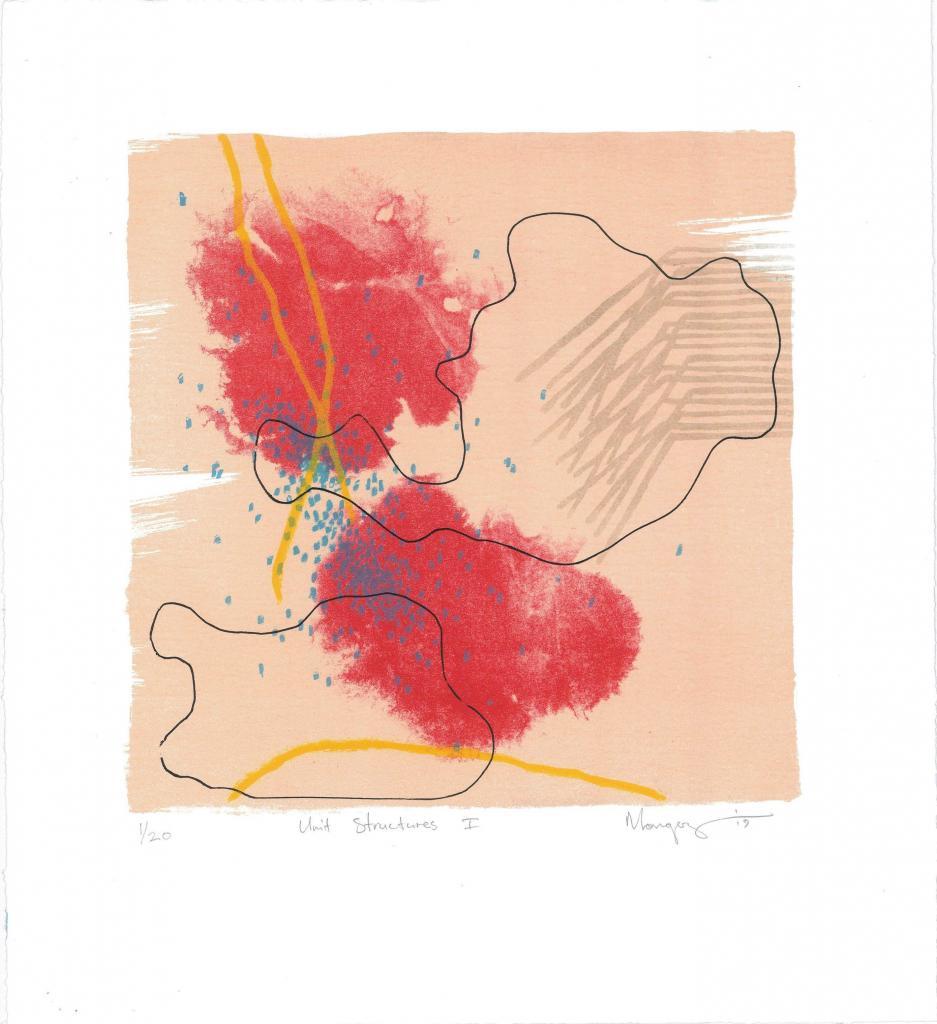
Mongezi Ncaphayi, Unit structures I, 2018. 38x35cm. Stone lithograph. © Courtesy Mongezi Ncaphayi and Atelier le Grand Village 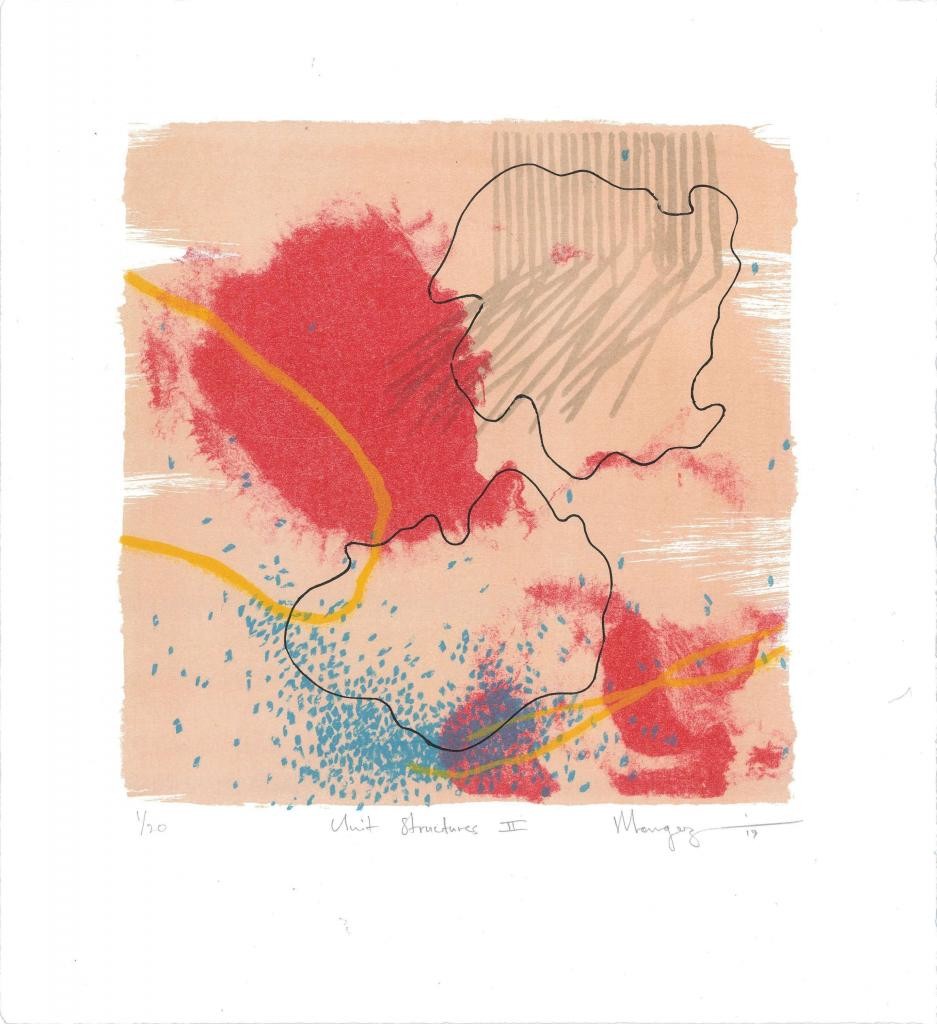
Mongezi Ncaphayi, Unit structures II, 2018. 38x35cm. Stone lithograph. © Courtesy Mongezi Ncaphayi and Atelier le Grand Village
Nadège: I am proud to be representing you with Atelier le Grand Village at 1:54 in London in October, with Diane Victor and Bambo Sibiya.
Mongezi: I’m honoured to be part of the 1-54 Contemporary African Art Fair London 2019. We will see what the works comes out for this during this residency at Atelier le Grand Village. I am looking for a twist, I think it is going to be exciting.
Nadège (to Francis van der Riet, Director of Atelier le Grand Village): When and why did you choose to work with the artist Mongezi Ncaphayi?
Francis: It was 2014. Mongezi Ncaphayi was the winner of the Gerard Sekoto prize in South Africa. I was interested in this prize and the people who won it. Mongezi is also a printmaker. His works were unusual because they are abstract. South African artists tend to be, on the whole, figurative. I had seen Mongezi’s etchings and I thought they had potential and I approached him to propose that we work together at the studio and that he learn stone lithography. I knew he had not done any stone lithography previously. I also appreciated Mongezi’s sense of spontaneity, the combination with music and the way he uses colours. In stone lithography, colour can be important and it is very well suited for that.
Mongezi accepted the invitation and it started from there. The more we work together, the more there is a synergy between us. He’s comes back regularly in the studio.
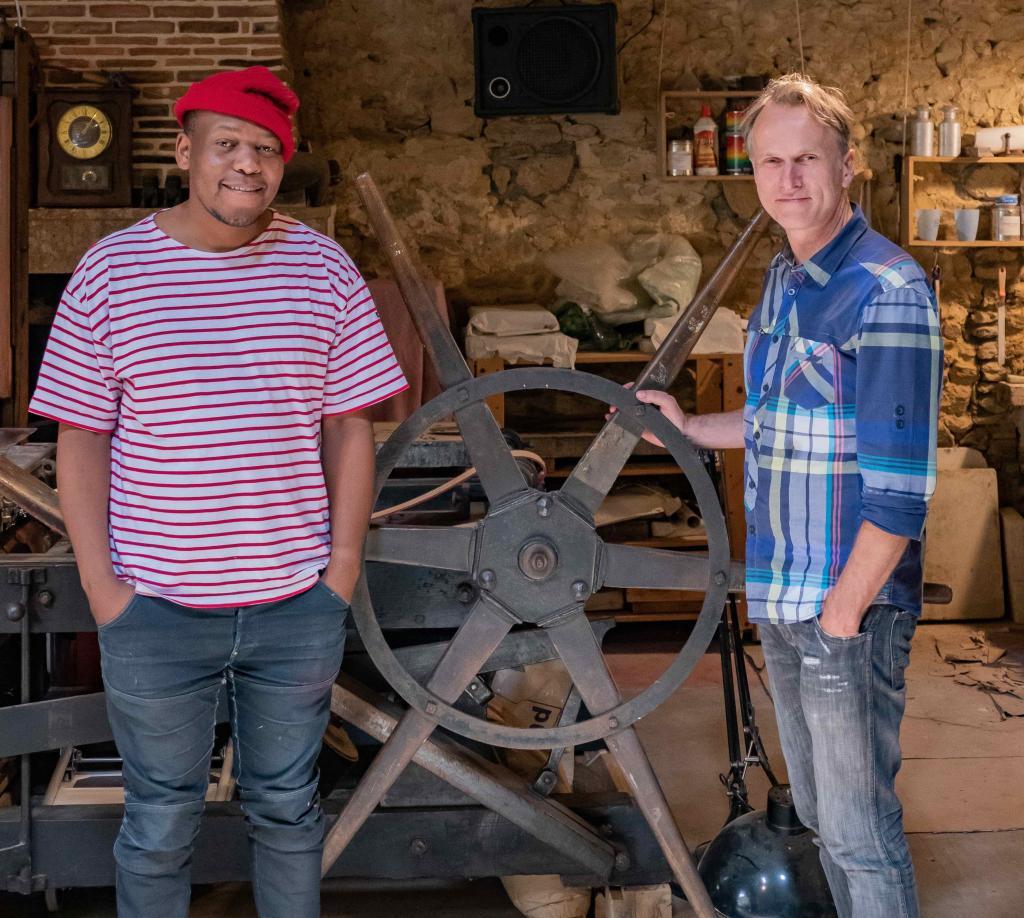
“We are very focused on reviving the art of stone lithography here. We also do mono prints, lino prints and we like to combine the different media.”
Francis van der Riet, Director of Atelier le Grand Village
Nadège: How did it initially work out?
Francis: We started two works and this evolved into a larger body of works. He liked the process of stone lithography. Here at Atelier le Grand Village, I showed him books from others artists, abstract artists/printmakers such as Hans Hartung and others who work at the studio as well. I think the combination of stone lithography with the surroundings of the studio helped him to free up his way of working. It was fairly precise and the stone forced him to free up, to be more spontaneous.
The stone does not forgive so you have to go ahead and just do it. I think that helped him to progress towards his paintings. Here at the studio he accomplished a large body of work which was subsequently exhibited for a solo show with ABSA in South Africa.
Nadège: Tell me more about 1:54 in London this October?
Francis: 1-54 discovered Atelier le Grand Village last year. They were surprised to find us in this remote corner in the south-west of France, and to find artists they knew about had come to work here. They came to visit and consequently invited us as a ‘special project’ for the London 1:54 Art Fair in October this year. I suggested we exhibit Mongezi together with Diane Victor and Bambo Sibiya. On show there will be printmaking works, mainly stone lithography. We are very focused on reviving the art of stone lithography here. We also do mono prints, lino prints and we like to combine the different media. There will also be a few other works on display that have been created by the artists during their stay here at Atelier le Grand Village, notably the smoke drawings of Diane Victor.
Nadège: What about the other artists that come to Atelier le Grand Village?
Francis: I like to think that the studio has created for itself its own portfolio of artwork from the artists that have been here. It is important for the studio to have a rich diversity, and so it needs different types of work. We have figurative, abstract, black and white, colour, loose and exact registration, landscape, portraits…. Amongst our abstract artists there is Valentin Stefanoff from Paris, the Franco Brazilian Celia Eid, and Mongezi from South Africa. That gives the richness to the studio. Hence the studio also influences the artists that come here. That’s exciting. You feel that the artist and the studio give and take with each other. The one give inspiration from the other and vice versa.
“The stone does not forgive so you have to go ahead and just do it. I think that helped Mongezi to progress towards his paintings”.
Francis van der Riet, Director of Atelier le Grand Village
Nadège: You are also a lithographer?
Francis: I am the master printer of this studio, Atelier le Grand Village. I started the studio around ten years ago but I have been interested in lithography for a long time. Once I had set up the studio I realised that I should share it with other artists. I grew up in Zimbabwe and in South Africa, and it seemed obvious to invite people from there. They love to come here. I think it helps that I understand where they come from and that they feel comfortable here. That’s important.
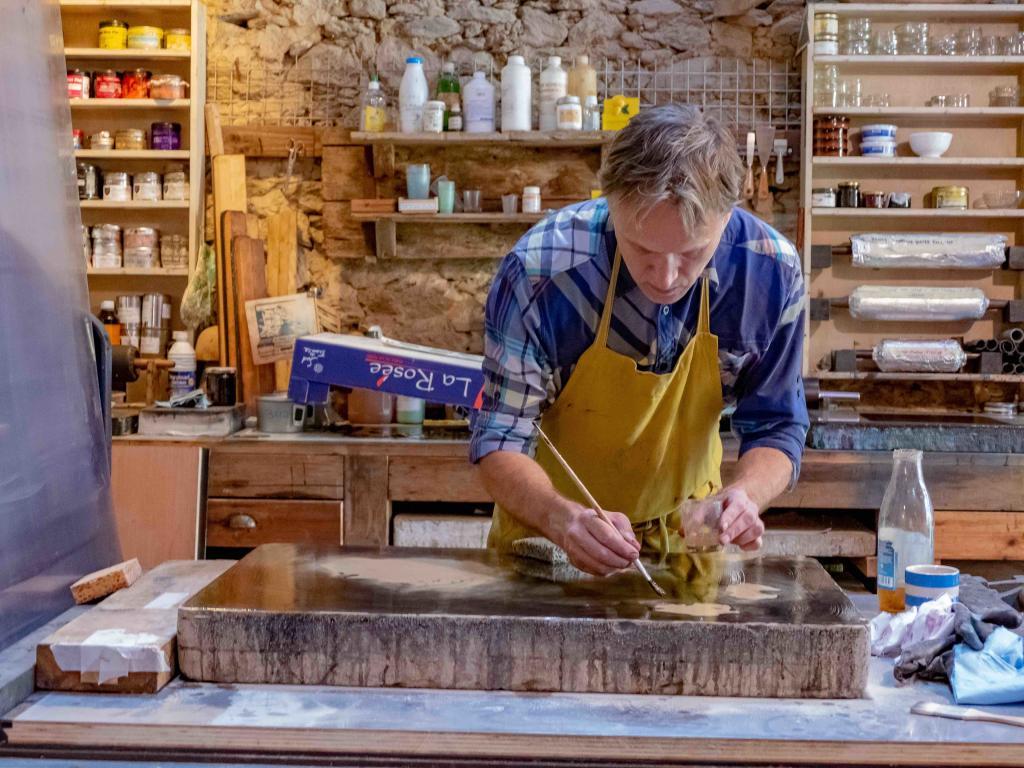
Nadège: How do you work with Mongezi?
Francis: We work as a duo. I do a certain amount of printmaking. As Mongezi adores printmaking, he participates as well in the process. Above all he creates the drawings on the stones, but he helps as well with the graining of the stones and the rest of the printing process. The studio has a collection of inks, and we dialogue about the different colours. The garden is also very inspirational for the colours we use here.
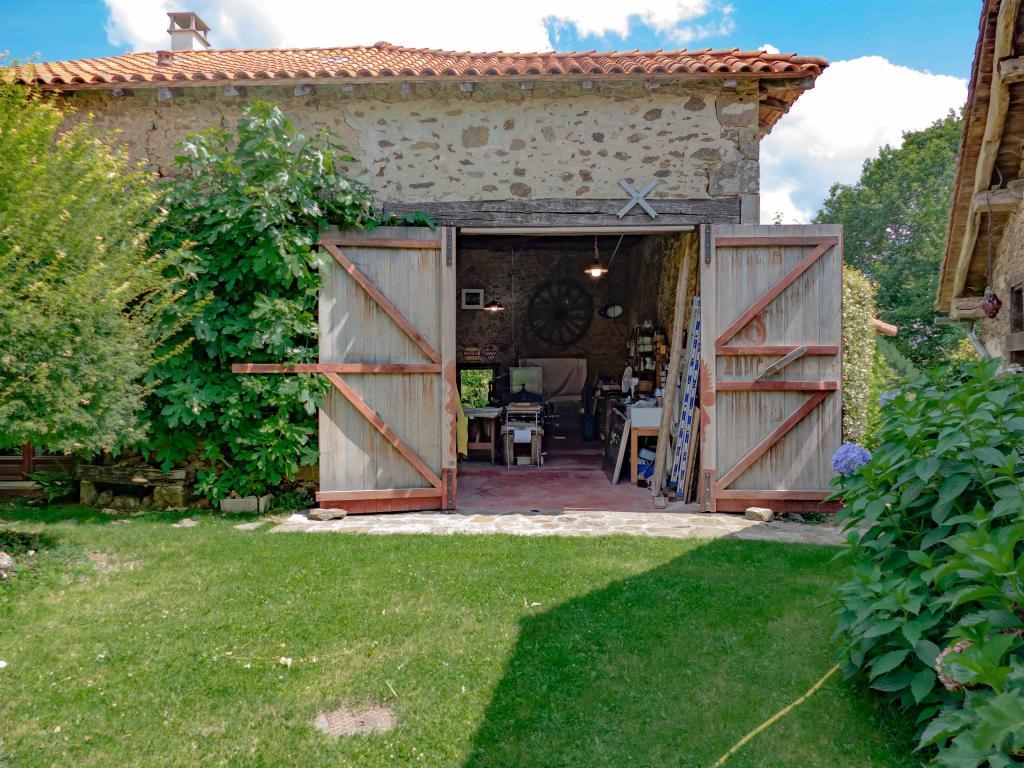
Nadège: So, you work a lot with the surroundings and the garden?
Francis: Very much so, I think the colours are inspired from here, depending of course what time of the year it is. Mongezi has been here at different times of the year, including winter. This is a big influence, and I would like to think that he could not produce the same type of work somewhere else. I think you can see which works of his come from Atelier le Grand Village. Mongezi and the other artists feel at home here. It’s not about coming one time but more about building a relationship. Printmaking, especially stone lithography, needs time.
Atelier le Grand Village will be presenting new works from Mongezi Ncaphayi, Diane Victor and Bambo Sibiya during 1.54 Contemporary African Art Fair 2019 in London. Please contact Atelier le Grand Village for further information or visit 1-54 Contemporary African Art Fair in London (3-6 October 2019).


